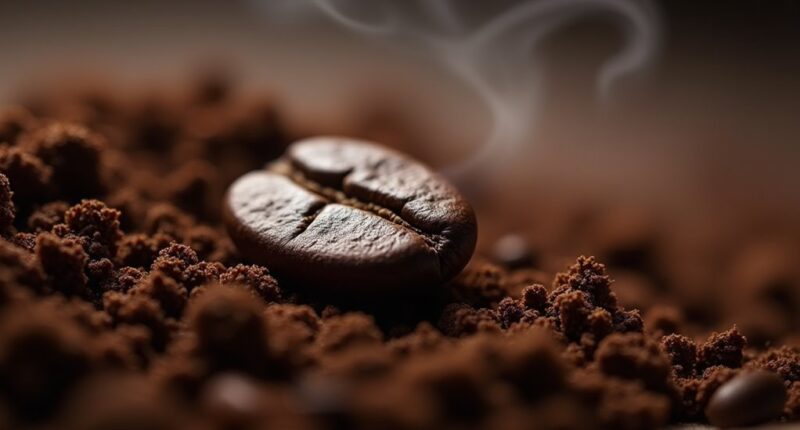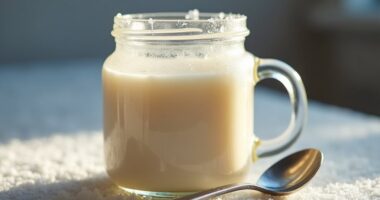Coffee’s like a magical potion made up of over 1,000 compounds! You’ve got sugars, lipids, and caffeine jiving together. Those sweet aromas you love come from things like furans and pyrazines, giving your brew depth and character. Plus, it’s packed with antioxidants and minerals like potassium. Who knew a humble bean could do so much? Stick around, and you’ll uncover even more cool stuff about your favorite cup of joe!
At a Glance
- Coffee beans are composed of approximately 60% carbohydrates, including sugars and starches.
- They contain lipids that contribute to the body and aroma of the coffee.
- Key components include caffeine and trigonelline, which affect heart rate and cognition.
- Minerals like potassium and magnesium are present in coffee, along with antioxidants.
- The flavor and aroma profile is influenced by the roasting process and chemical interactions.
Chemical Composition of Coffee
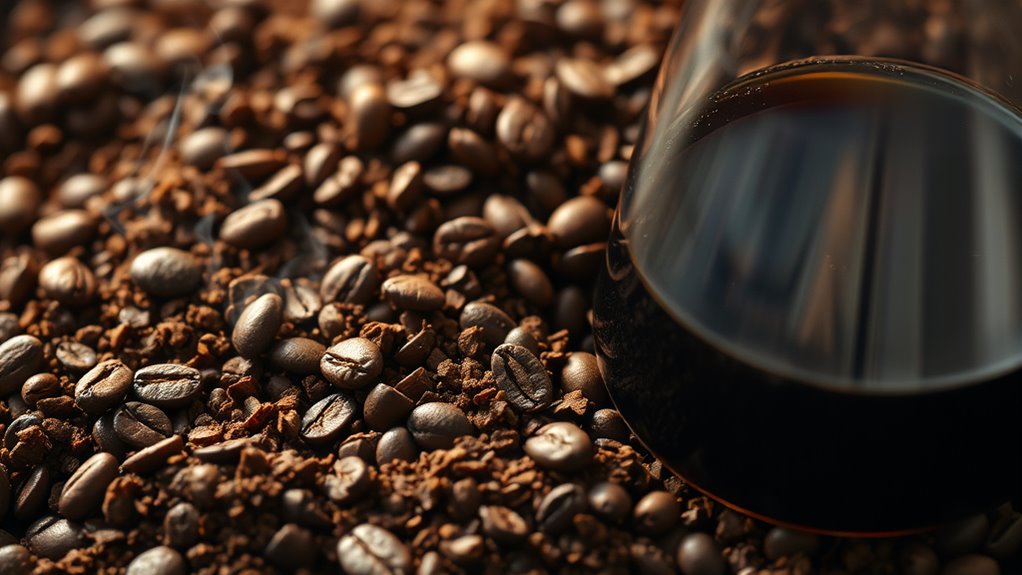
When you take a sip of your favorite coffee, have you ever wondered what’s actually in that magical brew?
Coffee’s chemical structure is pretty wild! About 60% of those beans are carbohydrates, like sucrose and starch, which play a big role during roasting. They interact with proteins, making those delightful flavors we all love.
You’ve got lipids adding body and aroma, too! And let’s not forget caffeine and trigonelline, which can make your heart race. The unique flavor journey of coffee beans is influenced by their origin and processing methods, which can significantly alter their chemical composition.
Aromatics and Flavor Profiles
Coffee’s not just a morning ritual; it’s a flavor explosion waiting to happen! You’ll find aromatic profiles that dance on your palate, creating flavor complexity with every sip. Here’s a quick look at some key aromatic compounds:
| Aromatic Compound | Aroma Description | Roast Impact |
|---|---|---|
| Furans | Caramel, nutty | Sweetness in light roasts |
| Pyrazines | Earthy, chocolatey | Intense in dark roasts |
| Aldehydes | Sweet, fruity | Bright in light roasts |
Colombian coffee beans are known for their distinct flavor profiles, which can enhance your brewing experience even further.
Key Nutritional Components
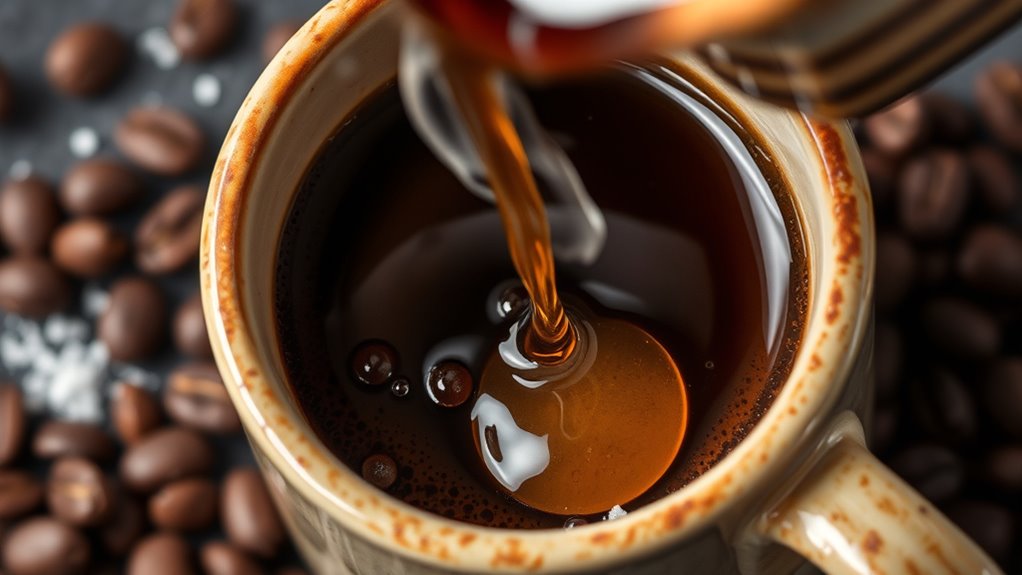
You know that amazing aroma of your morning brew? It’s not just a wake-up call; it’s a tiny nutritional powerhouse!
Coffee has negligible macronutrient content—think 1 calorie per 100 grams—so it won’t mess with your diet. You won’t find carbs or fats here, just a splash of protein.
But don’t fret! It’s packed with minerals like potassium and magnesium, giving your cup some extra love.
Plus, those antioxidants? They’re ready to fight off free radicals like champions. Additionally, the rich flavors of ground coffee enhance the overall experience and enjoyment of your daily cup.
The Role of Roasting in Coffee
Roasting coffee is a bit like throwing a party for your beans, and trust me, it’s a wild ride!
You start with the drying stage, where they crack like popcorn. Next, the browning stage kicks in—this is where the magic happens, with amazing flavor development thanks to chemical reactions!
Choosing your roast level affects everything, from acidity to sweetness. And don’t forget cooling techniques; they lock in those gorgeous flavors.
Monitoring sensory changes like color and smell is key for quality control. Additionally, using a flat burr coffee grinder can enhance the consistency of your grind, which is crucial for achieving the perfect extraction during brewing.
Effects of Roasting on Chemical Transformations
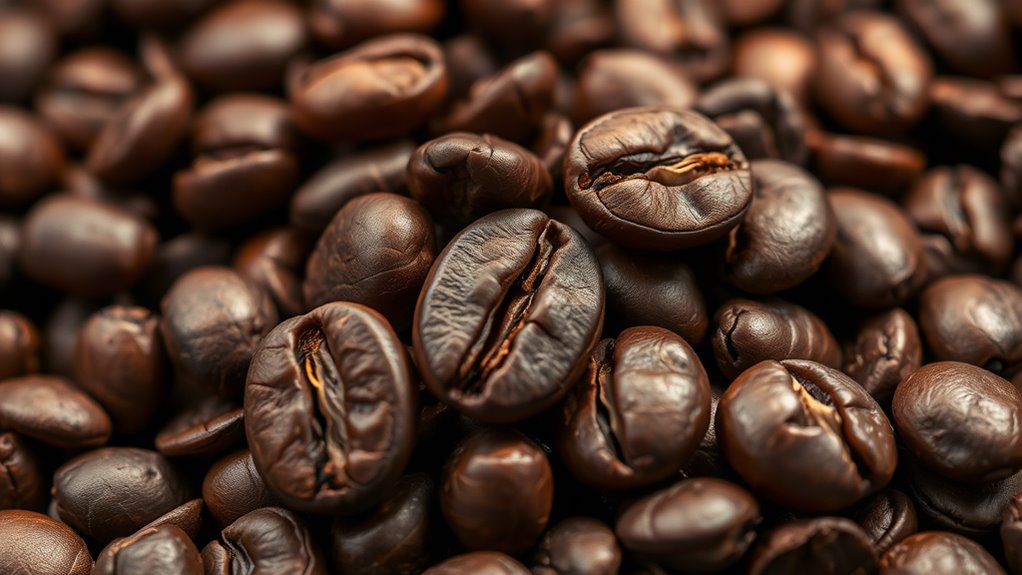
When you plunge into the world of roasting, you’re in for a fascinating science experiment with your coffee beans!
Roasting temperatures kick off a whirlwind of chemical reactions that transform green beans into your favorite brew. The Maillard reaction and caramelization work their magic, enhancing sweetness and creating those delightful aroma compounds we all love.
You’ll notice a balance shift too—acidity drops while bitterness reduces. Plus, as volatile oils develop, they lend complexity to each sip. The roast level significantly influences the overall taste and acidity of the brewed coffee.
Understanding Coffee’s Physical Properties
Coffee beans might look unassuming, but they’re like tiny treasure chests packed with secrets waiting to be discovered!
When you explore bean morphology, each bean shows its unique shape and size, averaging about 10.3 mm across. It’s fascinating how these little wonders retain moisture before roasting—losing it dramatically when heat hits. This moisture retention plays a big role in the final flavor you savor.
Plus, the waxy surface of green beans helps with water absorption, ensuring a perfect roast. The quality of water used during brewing can significantly influence the extraction process, making the perfect water essential for the best tasting coffee.
Health Benefits of Caffeine
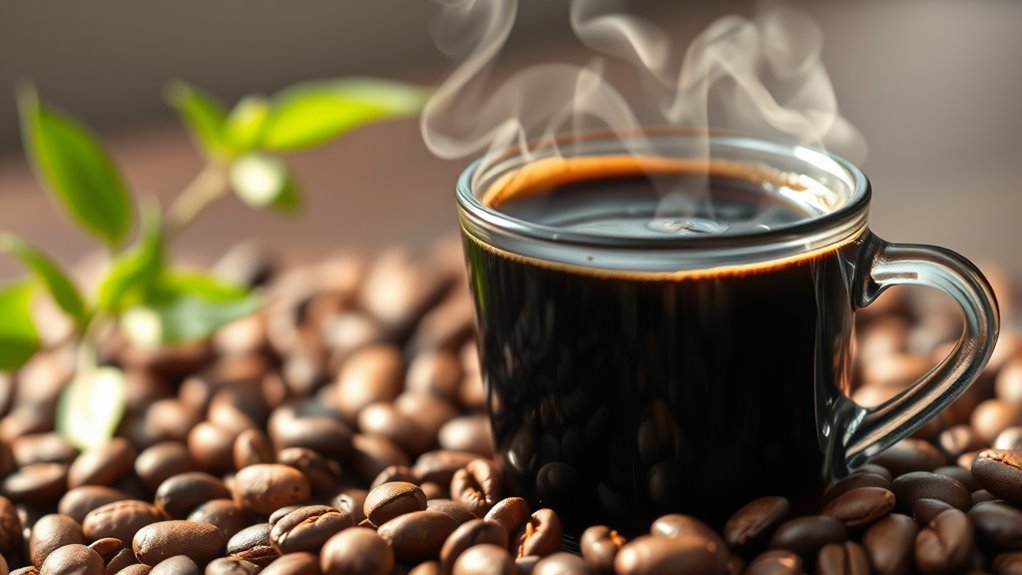
Did you know that your daily cup of coffee can actually be a superhero for your health? It’s true! Caffeine not only boosts your mood but also helps in caffeine metabolism, keeping you sharp and focused. Plus, moderate coffee drinkers enjoy lower risks of chronic diseases. Here’s a quick look at some benefits:
| Health Benefits | Effects |
|---|---|
| Chronic Diseases | 15% lower risk |
| Cognitive Health | Slower dementia progression |
| Mood Enhancement | Reduced risk of depression |
Additionally, drinking low acid coffee can be gentler on your stomach, making it a great choice for those with acid sensitivity.
The Importance of Carbohydrates and Proteins
While you might think of coffee primarily as a delightful pick-me-up, there’s a whole world of carbohydrates and proteins hanging out in those beans that deserves some love!
Carbohydrates make up about 60% of raw coffee beans, featuring fascinating types like starch and sucrose. These guys contribute to the coffee’s body and mouthfeel, even if they’re not sweet like dessert.
Now, proteins may only be around 13%, but they play essential roles during roasting, forming compounds that boost flavor and color. Additionally, the right coffee storage container can help preserve these important compounds and enhance the overall taste of your brew.
Volatile Compounds and Their Impact on Aroma
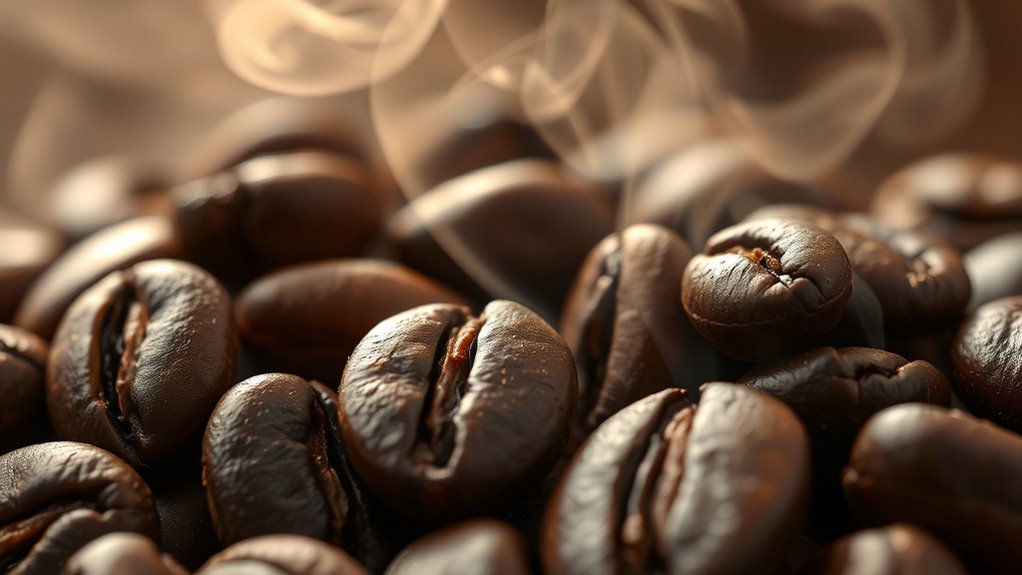
Imagine walking into your favorite coffee shop, the rich aroma wrapping around you like a cozy blanket.
Those delightful scents come from volatile profiles, tiny compounds that dance together to create a symphony of flavor evolution. Chemical interactions during roasting release aromatic diversity, giving life to nutty and caramel notes.
Each cup you sip is a sensory experience, shaped by how beans are grown, roasted, and brewed. It’s like a flavor party in your mouth! Additionally, the choice of affordable coffee beans can ensure you enjoy these vibrant flavors without breaking the bank.
